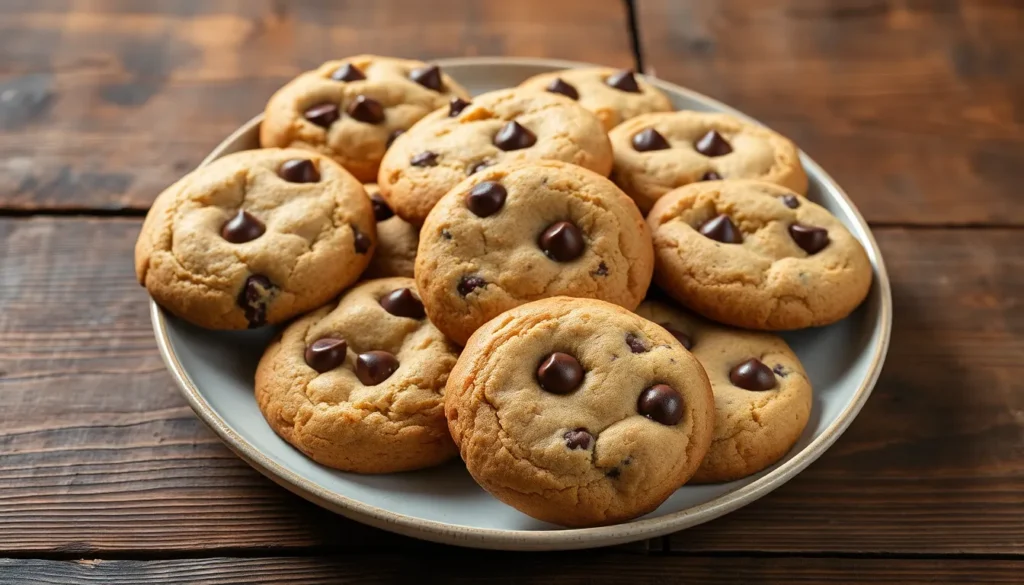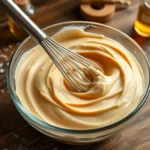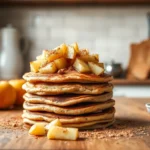We’ve all been there – craving fresh chocolate chip cookies only to discover we’re out of brown sugar. Don’t let an empty pantry stop you from enjoying homemade cookies! These chocolate chip cookies without brown sugar prove that you can create perfectly chewy and delicious treats using just white sugar.
Many bakers assume brown sugar is essential for that classic cookie texture but we’re here to change that mindset. Our recipe delivers cookies with amazing flavor and the perfect balance of crispy edges and tender centers. The secret lies in adjusting the technique and embracing what white sugar brings to the table.
Ready to discover your new go-to cookie recipe? These cookies bake up golden brown with plenty of chocolate chips in every bite. You’ll be amazed at how simple ingredients can create such satisfying results when you know the right approach.
Ingredients
We need only eight simple ingredients to create these perfectly chewy chocolate chip cookies without brown sugar. Our streamlined ingredient list proves that exceptional cookies don’t require complicated pantry items.
Dry Ingredients:
- 2¼ cups all-purpose flour
- 1 teaspoon baking soda
- 1 teaspoon salt
- 1 cup granulated white sugar
Wet Ingredients:
- 1 cup (2 sticks) unsalted butter, softened to room temperature
- 2 large eggs, at room temperature
- 2 teaspoons pure vanilla extract
Mix-ins:
- 2 cups semi-sweet chocolate chips
We arrange these ingredients in the order we’ll use them during mixing. The softened butter creates the foundation for our cookie dough’s texture while the single type of sugar simplifies our process without sacrificing flavor.
Room temperature ingredients blend more easily and create better cookie structure. We recommend removing eggs and butter from refrigeration 30 minutes before baking begins. The vanilla extract adds depth that complements the chocolate chips perfectly.
Our flour measurement requires careful attention since too much creates dense cookies while too little produces flat results. We suggest spooning flour into measuring cups and leveling with a knife for accuracy. Semi-sweet chocolate chips provide the ideal balance of sweetness against our white sugar base.
Equipment Needed
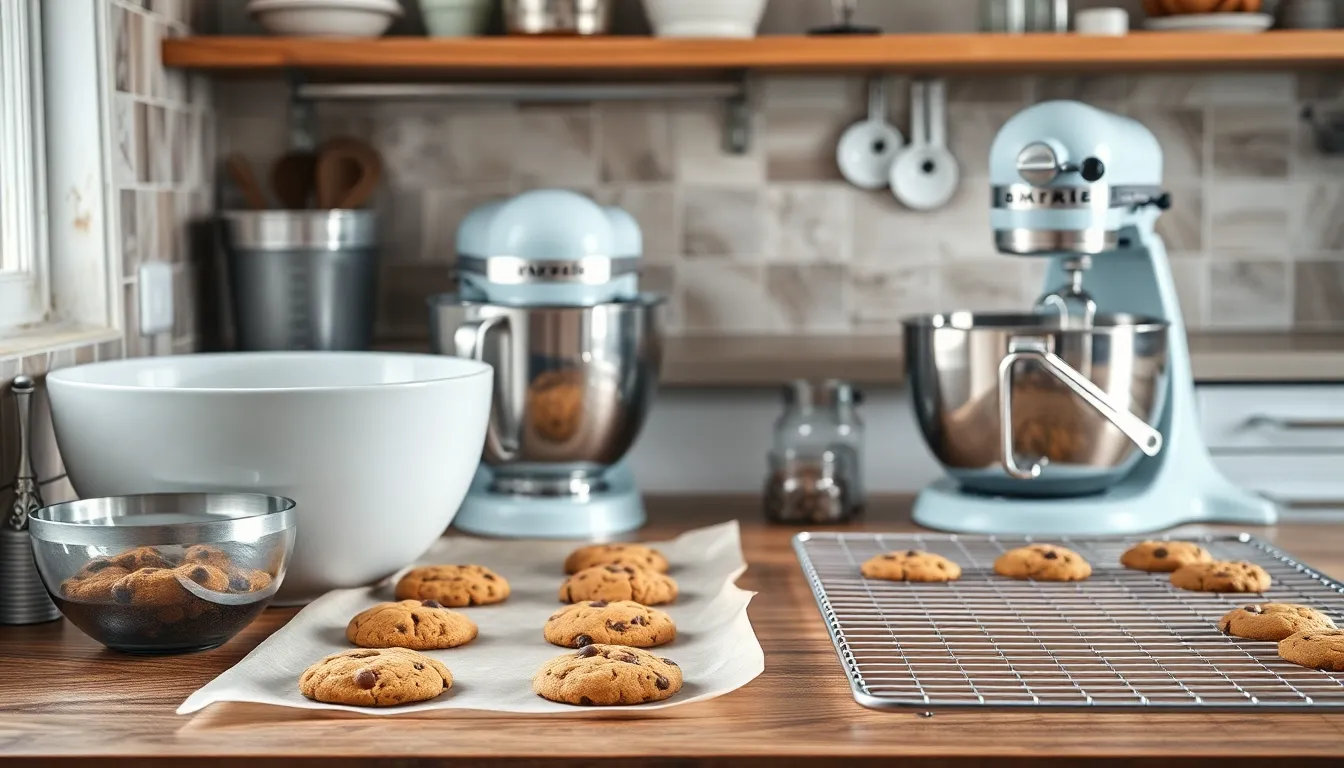
Creating our chocolate chip cookies without brown sugar requires basic baking equipment that most home bakers already have in their kitchens. We recommend gathering all equipment before starting to ensure a smooth baking process.
Essential Mixing Equipment:
- Large mixing bowl for combining dry ingredients
- Medium mixing bowl for creaming butter and sugar
- Stand mixer or handheld electric mixer for proper creaming
- Whisk or large spoon for manual mixing when needed
Measuring Tools:
- Measuring cups for flour and sugar
- Measuring spoons for small ingredients like vanilla and baking soda
- Kitchen scale for accurate flour measurement (optional but recommended)
Baking Equipment:
- Baking sheet(s) for cookie placement
- Parchment paper or silicone baking mat to prevent sticking
- Wire cooling rack for proper cookie cooling
The stand mixer or handheld electric mixer becomes particularly important when creaming butter and granulated sugar together. This creaming process creates the essential aeration that gives our cookies their proper structure and texture. Without brown sugar’s moisture content we rely heavily on this mechanical mixing to achieve the desired cookie consistency.
Parchment paper or silicone baking mats prevent our cookies from sticking while allowing even heat distribution. Wire cooling racks ensure our cookies maintain their chewy texture by allowing air circulation underneath as they cool from the 350°F baking temperature.
Instructions
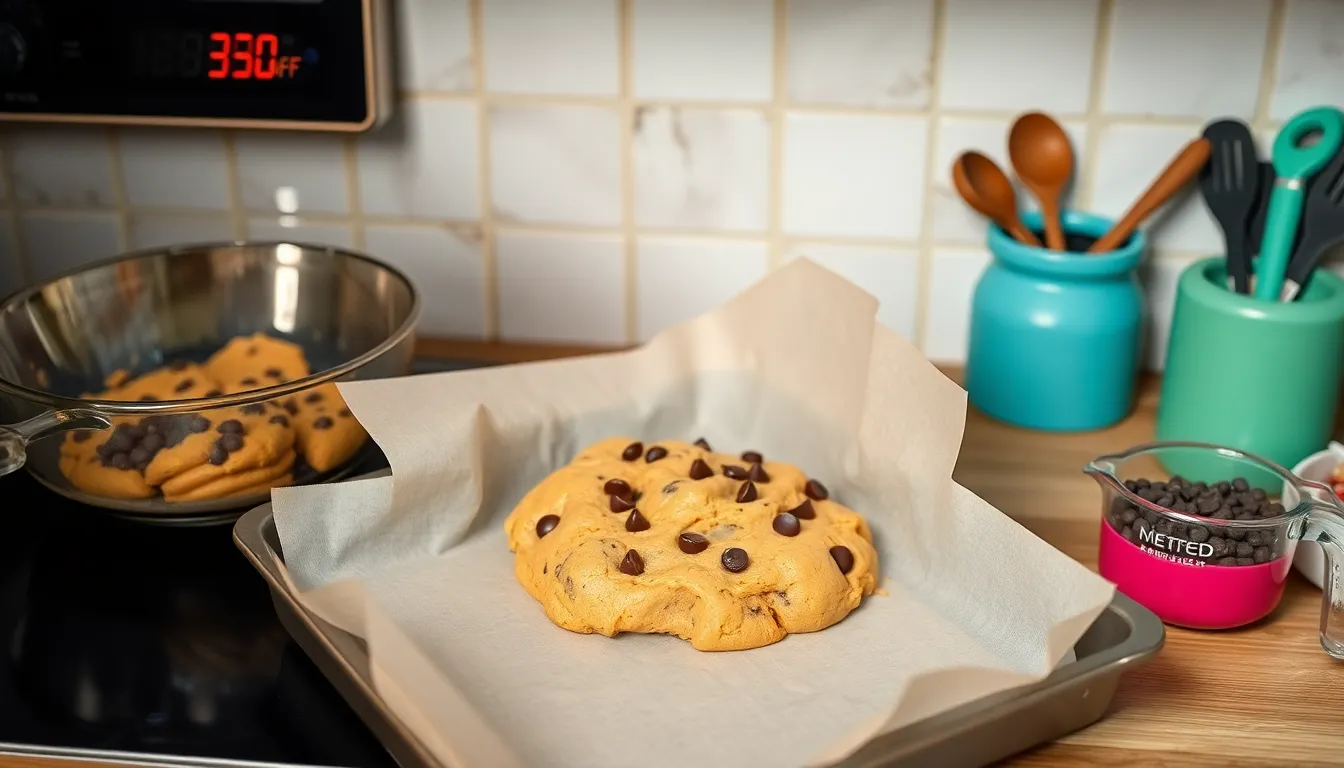
Follow these straightforward steps to create perfectly chewy chocolate chip cookies using only white sugar. We’ll guide you through each stage to ensure your cookies turn out with crispy edges and tender centers every time.
Prep the Dough
Preheat your oven to 350°F and line two baking sheets with parchment paper or silicone baking mats. Remove the unsalted butter from the refrigerator 30 minutes before baking to bring it to room temperature for optimal creaming. Room temperature butter blends more easily with sugar and creates the ideal cookie texture we’re aiming for.
Mix Wet Ingredients
Cream the room temperature unsalted butter and granulated sugar together in a large mixing bowl using a stand mixer or handheld mixer for 3-4 minutes until the mixture becomes light and fluffy. Beat in one egg at a time until fully incorporated. Add the vanilla extract and mix until just combined. This creaming process is crucial for developing the proper cookie structure without brown sugar.
Combine Dry Ingredients
Whisk together the all-purpose flour, baking soda, and salt in a separate medium bowl until evenly distributed. Gradually add the dry ingredient mixture to the wet ingredients, mixing on low speed until just combined. Avoid overmixing at this stage to prevent tough cookies. The dough should come together without being overworked.
Add Chocolate Chips
Fold in the semi-sweet chocolate chips using a wooden spoon or rubber spatula until they’re evenly distributed throughout the dough. Scoop rounded tablespoons of dough onto the prepared baking sheets, spacing them about 2 inches apart. Bake for 10-13 minutes depending on your desired level of crispiness, watching for golden brown edges while keeping the centers slightly soft.
Baking Directions
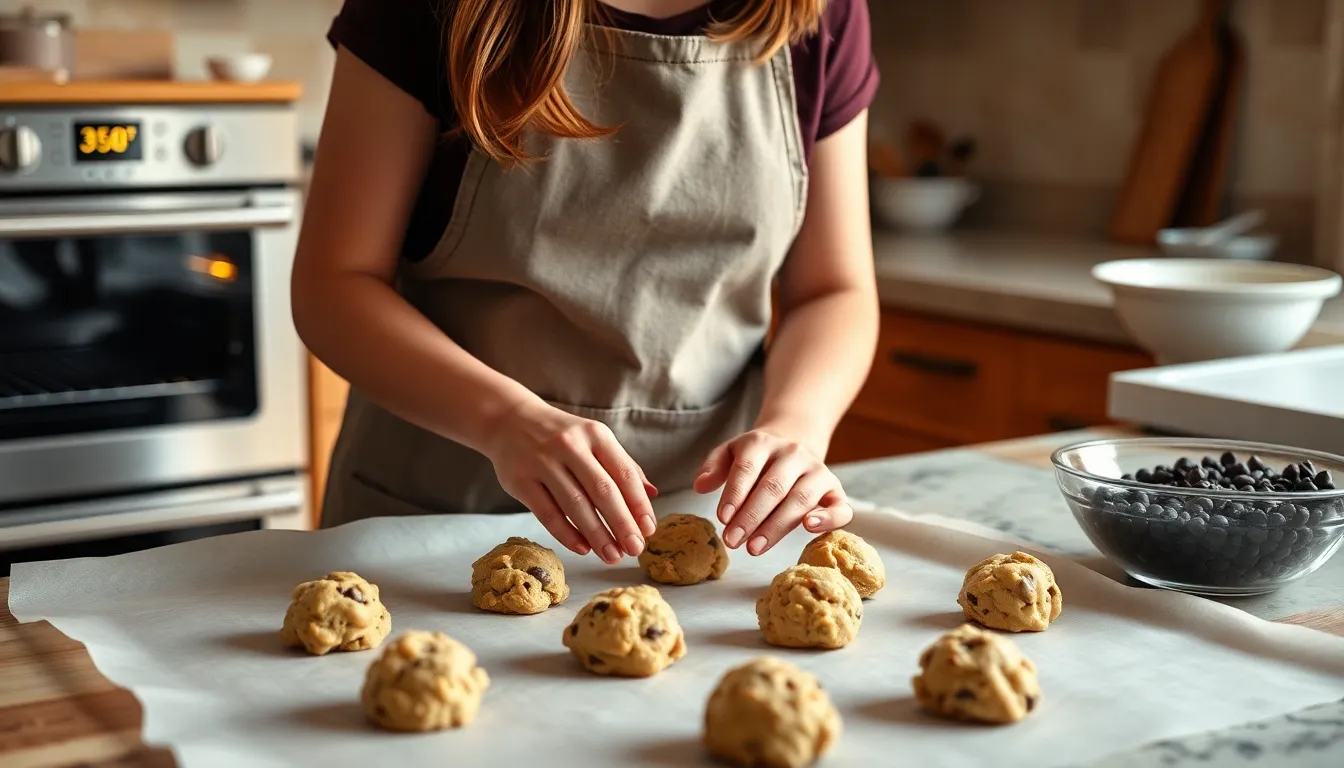
Now that our dough is perfectly mixed we’re ready to transform it into golden bakery-quality cookies. These step-by-step directions will guide us through the final baking process to achieve cookies with crispy edges and tender centers.
Preheat and Prepare
We begin by preheating our oven to 350°F to ensure consistent heat distribution throughout the baking process. While the oven reaches temperature we line two cookie sheets with parchment paper for easy release and even browning. The parchment paper prevents sticking and allows us to slide cookies off effortlessly once they’re done baking.
Shape and Space Cookies
We start by whisking together our dry ingredients in a separate bowl combining 1⅔ cups all-purpose flour with ½ teaspoon baking soda and ¼ teaspoon salt. Next we cream the room temperature butter with ⅔ cup granulated sugar until the mixture becomes smooth and fluffy. We add the optional tablespoon of pure maple syrup along with 1 teaspoon vanilla extract plus our egg and additional egg yolk if using then mix everything thoroughly.
The flour mixture gets gradually incorporated into our wet ingredients until we achieve a slightly sticky dough consistency. We fold in ¾ to 1 cup chocolate chips ensuring even distribution throughout the dough. Using a cookie scoop or spoon we portion approximately 1.5 tablespoons of dough for each cookie then roll the portions into uniform balls between our palms.
Bake to Perfection
We place the cookie balls on our prepared baking sheets leaving adequate space between each one to allow for spreading during baking. For extra chocolate appeal we can press additional chocolate chips onto the tops of each cookie ball before they go into the oven. The cookies bake for 10 to 13 minutes until their edges turn golden brown while the centers remain slightly soft.
Once baked we let the cookies cool on the baking sheet for 5 minutes to set their structure before transferring them to a wire rack for complete cooling. This cooling method helps maintain the perfect texture balance we’re aiming for in our brown sugar free chocolate chip cookies.
Cooling and Storage

Proper cooling and storage techniques ensure your chocolate chip cookies without brown sugar maintain their perfect texture and flavor. We’ll guide you through the essential steps to preserve your cookies’ delicious taste and ideal consistency.
Cooling Instructions
Initial Cooling Phase: We recommend allowing your cookies to cool on the baking sheet for exactly 5 minutes after removing them from the oven. This brief resting period prevents the cookies from breaking apart while they’re still too soft to handle.
Complete Cooling Process: Transfer the cookies to a wire rack to cool completely before storage. The wire rack allows air circulation around each cookie, preventing moisture buildup that could make them soggy. Complete cooling typically takes 15-20 minutes at room temperature.
Temperature Check: We ensure cookies reach room temperature before storing them. Warm cookies create condensation inside storage containers, which leads to texture changes and potential spoilage.
Storage Tips
Airtight Container Method: Store your cooled cookies in an airtight container to maintain optimal freshness. Glass containers with tight-fitting lids or plastic containers with secure seals work best for preserving texture and preventing staleness.
Room Temperature Storage: Keep containers at room temperature for up to 5 days without quality loss. Avoid storing cookies in areas with temperature fluctuations like near stoves or windows.
Extended Freezer Storage: Place cookies in freezer-safe bags or containers for storage up to 2 months. We recommend separating cookie layers with parchment paper to prevent sticking. Thaw frozen cookies at room temperature for 30 minutes before serving.
Moisture Management: Maintain cookie softness by storing them in a slightly humid environment without allowing moisture accumulation. Adding a slice of fresh bread to the container creates ideal humidity levels.
Individual Packaging: Package cookies in individual bags or small containers for events or gifting. This method maintains freshness while providing convenient portion control and easy distribution.
Freshness Preservation: Seal storage containers tightly after each use to prevent air exposure. Cookies become stale quickly when exposed to air for extended periods, losing their ideal chewy texture.
Tips for Perfect Results

We’ve discovered that mastering chocolate chip cookies without brown sugar requires attention to several key techniques that ensure consistently delicious results.
Cream Butter and Sugar Thoroughly
Our testing shows that creaming butter and granulated sugar for 3-4 minutes creates the light, fluffy texture that makes these cookies exceptional. The mixture should appear pale and increased in volume before adding other ingredients. This extended creaming time compensates for the moisture typically provided by brown sugar.
Avoid Overmixing the Dough
We recommend mixing ingredients just until combined once you add the flour mixture. Overworking the dough develops too much gluten, resulting in tough cookies rather than the tender texture we’re aiming for. Stop mixing as soon as no flour streaks remain visible.
Monitor Baking Time Carefully
Our recipes typically require 9-11 minutes at 350°F, but we’ve found that cookies may appear slightly underdone when you remove them from the oven. The centers should look just set while edges turn golden brown. These cookies continue cooking on the hot baking sheet after removal.
Master the Cooling Process
We always let cookies cool on the baking sheet for 5 minutes before transferring them to a wire rack. This initial cooling period prevents the cookies from breaking apart while ensuring they maintain their chewy centers. Moving them too quickly results in cookies that fall apart or become too firm.
Customize with Confidence
Our base recipe welcomes additions like chopped nuts, different chocolate varieties, or even candy pieces. We suggest keeping additional mix-ins to no more than 1 cup total to maintain proper dough consistency. Dark chocolate chips provide extra richness that pairs beautifully with the pure sweetness of granulated sugar.
Ensure Proper Dough Consistency
We’ve learned that the dough should feel slightly sticky but hold together when shaped into balls. Adding an extra egg yolk creates richer cookies, while a tablespoon of maple syrup enhances moisture without compromising the structure these cookies achieve with white sugar alone.
Variations and Substitutions

We can transform our basic white sugar chocolate chip cookie recipe into countless delicious variations by making simple ingredient swaps and additions. These modifications allow us to customize flavors and textures while maintaining the excellent results our brown sugar-free base provides.
Sweetener Alternatives
Our granulated sugar foundation works beautifully with additional sweetener enhancements. We recommend adding 1 tablespoon of maple syrup to replicate the depth of flavor that brown sugar typically provides. This small addition creates a richer taste profile without compromising the cookie structure. Honey or agave nectar serve as excellent alternatives, though each brings its own distinct flavor notes that will subtly change the final cookie character.
| Sweetener | Amount | Flavor Impact | Texture Notes |
|---|---|---|---|
| Maple Syrup | 1 tablespoon | Rich, caramel-like depth | Adds slight moisture |
| Honey | 1-2 tablespoons | Floral sweetness | Creates tender crumb |
| Agave Nectar | 1 tablespoon | Mild, neutral sweetness | Maintains chewy texture |
Chocolate Variations
We can easily customize the chocolate element by substituting different types of chocolate chips or chunks. Dark chocolate chips create a more sophisticated flavor profile that pairs exceptionally well with our white sugar base. Milk chocolate chips offer extra sweetness, while white chocolate chips provide a creamy contrast. Mini chocolate chips distribute more evenly throughout the dough, while chocolate chunks create pockets of intense chocolate flavor.
Mix-In Options
Our versatile dough accepts many mix-in additions beyond chocolate chips. We suggest limiting total mix-ins to 1½ cups to maintain proper dough consistency. Chopped nuts like walnuts or pecans add delightful crunch and pair beautifully with the maple syrup enhancement. Dried fruits such as cranberries or cherries introduce chewy texture contrasts. Coconut flakes bring tropical notes, while butterscotch chips offer caramel-like richness similar to brown sugar cookies.
Texture Modifications
We can adjust our cookie texture by making strategic ingredient modifications. Adding an extra egg yolk creates richer, more tender cookies with enhanced chewiness. Reducing the flour by 2 tablespoons produces thinner, crispier cookies. Increasing the flour by 2 tablespoons yields thicker, cakier results. Melting the butter instead of creaming it creates chewier cookies with denser texture.
Flavor Enhancements
Our basic recipe welcomes various flavor additions that complement the white sugar sweetness. Almond extract can replace half the vanilla for nutty undertones. Cinnamon adds warmth and spice complexity. Orange zest brightens the overall flavor profile. Espresso powder intensifies chocolate flavors when using chocolate chips. Each enhancement should be used sparingly, typically ½ teaspoon for extracts and ¼ teaspoon for spices.
Make-Ahead Instructions
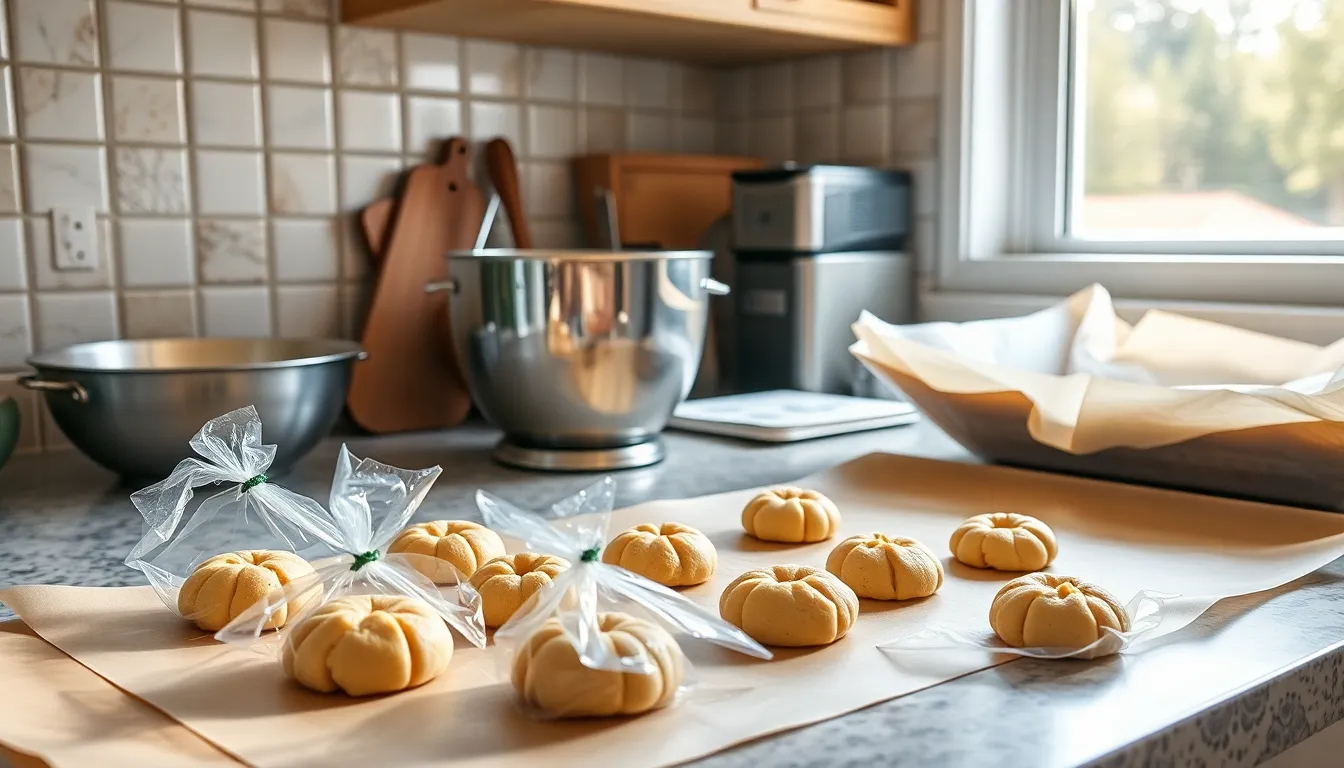
Preparing cookie dough ahead of time transforms last-minute baking into an effortless process. We can prepare the entire dough recipe up to 24 hours in advance and store it covered in the refrigerator. This resting period actually enhances the cookie texture by allowing the flour to fully hydrate and the flavors to meld together.
Refrigerator Storage Method: Wrap the finished dough tightly in plastic wrap or transfer it to an airtight container before refrigerating. When ready to bake, let the chilled dough sit at room temperature for 10-15 minutes to soften slightly before scooping. Cold dough may require an additional 1-2 minutes of baking time.
Freezer Storage for Extended Planning: Scoop the cookie dough into individual portions and place them on a parchment-lined baking sheet. Freeze the dough balls for 2-3 hours until solid, then transfer them to freezer-safe bags or containers. Properly stored cookie dough maintains its quality for up to 2 months in the freezer.
Baking Frozen Cookie Dough: No thawing is necessary when baking frozen dough balls. Place them directly on prepared baking sheets and add 1-2 extra minutes to the standard baking time. The cookies will spread and bake evenly, producing the same delicious results as fresh dough.
Portion Control Benefits: Pre-scooped frozen dough allows us to bake exactly the number of cookies needed without waste. We can bake a few cookies for immediate enjoyment while keeping the remaining dough frozen for future cravings. This method ensures consistent cookie sizes and eliminates the temptation to overbake large batches.
Conclusion
These chocolate chip cookies prove that brown sugar isn’t essential for creating exceptional homemade treats. We’ve shown you how white sugar alone delivers perfectly chewy centers with delightfully crispy edges.
The simple ingredient list and straightforward techniques make this recipe accessible for bakers of all skill levels. Whether you’re out of brown sugar or simply prefer a cleaner sweetness profile these cookies won’t disappoint.
With proper storage techniques and make-ahead options you’ll always have fresh cookies ready when cravings strike. The versatility of this base recipe also allows for endless customization with your favorite mix-ins and flavor variations.
Your kitchen is now equipped with everything needed to create these delicious white sugar chocolate chip cookies that’ll quickly become a household favorite.
Frequently Asked Questions
Can you really make chocolate chip cookies without brown sugar?
Yes, you can make delicious chocolate chip cookies using only white granulated sugar. The key is proper technique and ingredient ratios. These cookies will have crispy edges and tender centers, proving that brown sugar isn’t essential for great texture and flavor.
What ingredients do I need for brown sugar-free chocolate chip cookies?
You need eight simple ingredients: all-purpose flour, baking soda, salt, granulated white sugar, unsalted butter, eggs, vanilla extract, and semi-sweet chocolate chips. All ingredients should be at room temperature for best mixing results.
How do these cookies taste compared to traditional recipes?
These cookies are chewy, flavorful, and perfectly balanced with crispy edges and tender centers. The semi-sweet chocolate chips provide ideal sweetness contrast against the white sugar base, creating cookies that are just as delicious as traditional recipes.
What’s the proper baking temperature and time?
Bake at 350°F (175°C) for 9-11 minutes. Cookies may appear slightly underdone when removed but will continue cooking on the hot baking sheet. Look for lightly golden edges while centers remain soft.
How should I store these cookies?
Store cooled cookies in airtight containers at room temperature for up to 5 days. For longer storage, freeze cookies for up to 2 months. Allow cookies to cool completely before storing to prevent moisture buildup.
Can I make the dough ahead of time?
Yes, cookie dough can be refrigerated for up to 3 days or frozen for up to 3 months. Chilled dough actually improves texture and flavor. You can bake frozen dough balls directly without thawing, adding 1-2 extra minutes to baking time.
What substitutions can I make to customize the recipe?
You can substitute sweeteners like maple syrup or honey, add different mix-ins like nuts or dried fruit, or enhance flavors with almond extract, cinnamon, or orange zest. For chewier cookies, add an extra egg yolk.
Why is room temperature butter important?
Room temperature butter creams properly with sugar, creating the light, fluffy texture essential for perfect cookies. Cold butter won’t incorporate well, while melted butter can make cookies too flat and greasy.

